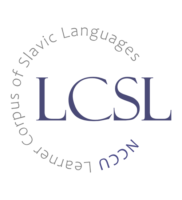2021-08 研討會論文發表 Conference Paper Published
Lin, M. S.-H., Chui, K. & Yeh, H.-L. (2021, August). “A cross-linguistic study of DO-constructions in Mandarin Chinese, Russian, and Czech”. 10thWorld Congress of the International Council for Central and East European Studies, Concordia University, Montreal, Canada.
Abstract
The main goal of this study is to compare specific definable language constructions across different languages and to investigate these equivalent constructions by their functions cross-linguistically. According to Croft (2014, 2016), language constructions are used to express functions. Cross-linguistic comparison of constructions must be based on functions or at least derived structures. One can restrict the scope of typological comparison by selecting a set of functionally related constructions that are likely to share universal constraints. In this study, DO-constructions are common constructions across languages, including Mandarin Chinese, Russian and Czech. The pattern of such constructions can be described as the following:
DO+(pre-modifier/s)+head noun+(post-modifier/s)
However, DO-constructions in Mandarin Chinese are mostly able to be replaced by verbs or verbal phrases, which are related to the head noun in the pattern. To apply DO-constructions in Mandarin Chinese is assumed to be with more informative functions. From this point of view, this study intends to investigate the DO-constructions further in Russian and Czech. The research data will be mainly from Corpus of Contemporary Taiwanese Mandarin (COCT), Russian National Corpus and Czech National Corpus. (Please see the examples in the table below.) Not only the spoken data will be analyzed, but also the written data will be discussed in this study. In Mandarin Chinese, such nominalized-v DO-constructions appear 95.5% in written data and only 4.5% in spoken data. (Chui, 2018) For the data in Russian, the nominalized-v DO-constructions appear 65.4% in written discourse and 34.6% in spoken discourse. In Czech, the equivalent constructions occur 68.6% in written discourse and 31.4% in spoken discourse. It seems worthy to have more discussions on the distributions of such DO-constructions across languages in written and also in oral data, and at the same time to investigate the modifications in the constructions. The results of this study will contribute to better understanding of linguistic diversity.

